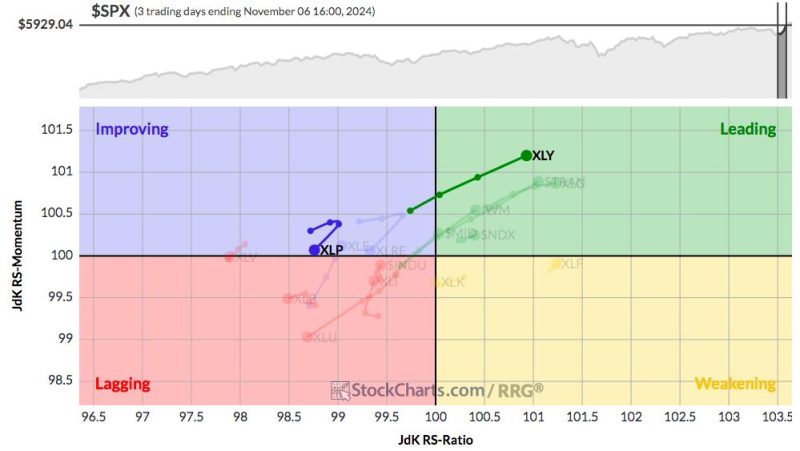In recent months, the financial markets have seen a significant shift in investor sentiment as the secular bull market continues its course. This evolution has been marked by a major rotation in the types of stocks that are favored by investors, with some sectors seeing substantial gains while others have experienced relative weakness.
One of the key drivers behind this rotation is the changing outlook on interest rates and inflation. As the global economy continues to recover from the impact of the COVID-19 pandemic, central banks have signaled that they may need to tighten monetary policy sooner than expected to combat rising inflation. This has led investors to favor sectors that are less sensitive to interest rate hikes, such as technology and healthcare, while cyclicals like energy and financials have lagged behind.
Another factor contributing to the rotation is the ongoing debate around valuation levels in the market. With traditional valuation metrics suggesting that many stocks are overvalued, investors have started to shift their focus towards companies that offer strong growth potential at a reasonable price. This has benefitted growth stocks in sectors like technology and consumer discretionary, while value stocks have struggled to keep up.
Furthermore, the resurgence of meme stocks and retail trading activity has added a layer of volatility to the markets, with individual stocks experiencing dramatic price swings based on social media chatter and online forums. While some investors see this as a sign of exuberance and speculate on short-term gains, others caution against the risks involved in chasing after trendy stocks without considering their fundamental value.
Overall, the secular bull market appears to be intact, with economic indicators pointing towards continued growth and corporate earnings remaining robust. However, the ongoing rotation in the market serves as a reminder that investors need to stay nimble and adapt their portfolios to changing conditions in order to navigate the uncertainties ahead. As always, diversification and a long-term perspective are key principles to weathering the ups and downs of the market and achieving sustainable investment returns.

